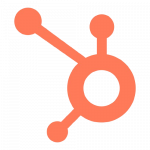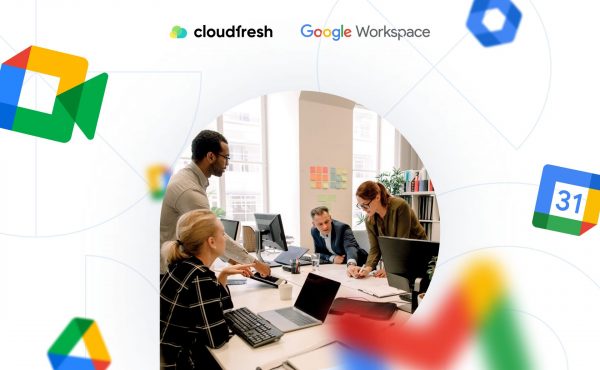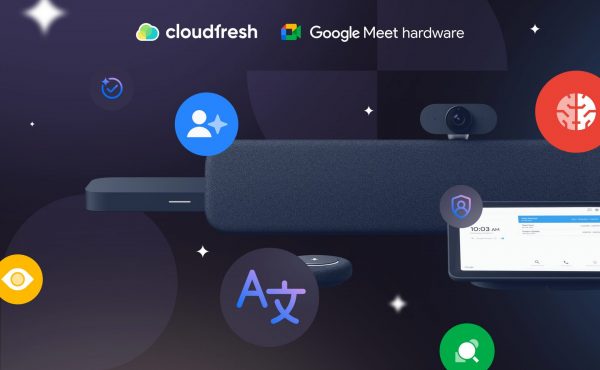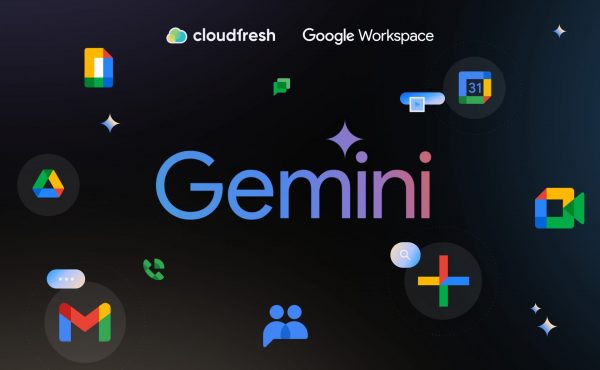Google Workspace Pricing Plans in 2025
What’s the ROI for Google Workspace AI?
- How Do You Quantify AI Impact?

- So, What’s the ROI of Google Workspace AI?
- There Are Indirect Cases as Well

- Google Workspace AI ROI Measurement and Data Acquisition: A Checklist
Gauging the exact return on investment (ROI) of AI features in a suite like Google Workspace isn’t straightforward. Tools like Smart Compose in Gmail and Docs, Gemini across apps, or NotebookLM as a multi-source info hub are baked right into the way people already work.
Unlike standalone software, AI in Google Workspace isn’t a separate tool. It’s part of the larger experience. So when someone benefits, say, from a faster email draft, it’s tough to credit AI alone without considering Gmail’s broader functionality.
To get a clearer picture, ROI analysis needs to go beyond just cost savings. You have to look at how AI helps people work better—whether it’s through faster turnaround times, sharper output, quicker idea generation, or even just happier, less frustrated employees. A broader, more nuanced approach is the only way to really understand what AI brings to the table.
The key is to measure at the task level. Try comparing performance before and after AI features are introduced, or use A/B testing when possible. Big-picture metrics like company-wide productivity or profits are often too messy—there are just too many moving parts.
This kind of measurement challenge isn’t unique to AI. It’s something any organization faces when rolling out new tools that are deeply tied into existing systems. It just takes a more thoughtful, fine-grained look to really see what’s working.
How Do You Quantify AI Impact?
To understand the impact of AI in Google Workspace, it helps to look at a mix of direct and indirect metrics—ones that reflect time saved, costs cut, better output, and broader strategic value.
Time Savings & Efficiency Gains
How to measure it: Track how long tasks take before and after AI tools are introduced. You can do this through time studies, structured user surveys, or by using analytics from the platform itself, if available.
Example: Let’s consider a team of 10 employees who heavily use Gemini for Google Workspace.
- Email: Employees write an average of 10 emails per day. With Smart Compose and Smart Reply, they save 30 seconds per email on average.
- Meetings: Each employee attends an average of 5 meetings per week, and AI-powered summaries save them 15 minutes of post-meeting wrap-up time per meeting.
- Content Creation: Employees save an average of 2 hours per week by using Gemini in Docs and Sheets to draft reports and analyze data.
Calculation:
- Email Time Saved: 10 employees * 10 emails/day * 0.5 min/email = 50 minutes/day.
- Meeting Time Saved: 10 employees * 5 meetings/week * 15 min/meeting = 750 minutes/week.
- Content Creation Time Saved: 10 employees * 2 hours/week = 20 hours/week = 1,200 minutes/week.
- Total Weekly Time Saved: (50 minutes/day * 5 workdays/week) + 750 minutes/week + 1,200 minutes/week = 2,200 minutes/week. This is equivalent to 36.67 hours per week.
Cost Reduction
How to measure it: Convert time savings into dollar figures by multiplying saved hours by the average hourly wage. Also, track reductions in mistakes that would’ve needed rework or better resource use thanks to AI.
Example: Continuing with our team of 10 employees, let’s assume an average fully-loaded hourly wage of $25.
- From the previous calculation, the team saves 36.67 hours per week.
- The company was previously spending $10 per month on a third-party service for meeting transcriptions, which is now handled by AI in Google Meet.
Calculation:
- Productivity Value: 36.67 hours/week * $25/hour = $916.75 per week.
- Annualized Productivity Value: $916.75/week * 52 weeks/year = $47,671 per year.
- Vendor Cost Savings: $10/month * 12 months/year = $120 per year.
- Total Annual Cost Reduction: $47,671 + $120 = $47,791.
Better Output (Quality & Quantity)
How to measure it: Evaluate whether the work produced is better or more polished—and whether more of it gets done in the same amount of time. You can back up this qualitative judgment with user feedback, ratings, or other metrics like compliance accuracy.
Example: The team sends out a monthly newsletter to 100,000 subscribers.
- By using AI to generate and test different subject lines and email copy, they increase the click-through rate (CTR) from 2% to 2.5%.
- Each click generates an average of $2 in revenue.
Calculation:
- Clicks before AI: 100,000 subscribers * 2% CTR = 2,000 clicks.
- Revenue before AI: 2,000 clicks * $2/click = $4,000.
- Clicks with AI: 100,000 subscribers * 2.5% CTR = 2,500 clicks.
- Revenue with AI: 2,500 clicks * $2/click = $5,000.
- Increased Monthly Revenue: $5,000 – $4,000 = $1,000.
- Annualized Revenue Impact: $1,000/month * 12 months/year = $12,000.
Strategic Benefits & Broader Impacts
How to measure it: These are tougher to pin down with numbers but can be just as important. Use surveys, feedback sessions, and project metrics to get a read on things like faster decisions, stronger collaboration, and happier employees.
Example: Let’s analyze the impact on employee retention for our team of 10.
- The average cost to replace an employee (recruitment, training, lost productivity) is $35,000.
- Before implementing AI tools, the annual employee turnover rate was 15%.
- After a year of using AI to reduce tedious work and improve job satisfaction, the turnover rate drops to 12%.
Calculation:
- Turnover before AI: 10 employees * 15% = 1.5 employees.
- Cost of turnover before AI: 1.5 employees * $35,000/employee = $52,500.
- Turnover with AI: 10 employees * 12% = 1.2 employees.
- Cost of turnover with AI: 1.2 employees * $35,000/employee = $42,000.
- Annual Savings from Reduced Turnover: $52,500 – $42,000 = $10,500.
The real value of AI in a toolset like Google Workspace isn’t usually about driving new revenue directly. It’s about helping people get more done with fewer errors and less hassle.
This matters when making the case for AI investments. Instead of looking for a spike in sales, focus on the ripple effects—like how small gains in efficiency across thousands of users add up fast. These things may not show up as a line item in revenue, but they carry serious financial weight over time.
AI’s benefits are often connected. Saving time can lower costs and boost output. Better output can lead to smarter decisions. And happier employees can mean lower turnover and higher productivity. These effects build on one another.
So when you’re measuring impact, don’t zoom in too closely. A single metric won’t tell the whole story. AI in productivity tools is all about change in how work gets done across teams, roles, and tasks.
So, What’s the ROI of Google Workspace AI?
AI isn’t just improving workflows—it’s driving real business results. Take Incubeta, for example. By using Gemini to surface proactive, context-aware insights, they saw a 50% boost in ROI for short-term campaigns.
That kind of impact goes well beyond saving time. Gemini helped them spot opportunities, react faster, and fine-tune campaigns more effectively—all of which translated directly into revenue.
This shows how AI can extend human thinking, not just speed it up. When insights come faster and are rooted in context, decisions get sharper, resource use improves, and strategy becomes more focused.
Mondelez, the global snack giant behind brands like Oreo and Cadbury, is using Imagen to generate high-quality visuals for campaigns running in more than 150 countries. Their target: a 25% increase in ROI from AI-generated creative.
It’s a measured but ambitious move, especially at that scale. By cutting down the time and cost of content production while maintaining brand consistency, they’re setting a new bar for creative speed and reach.
Meanwhile, Elanco, a leader in animal health, built a gen AI framework to support vital operations—from handling customer orders to tracking clinical insights. Using Vertex AI and Gemini, they’ve already seen an estimated $1.9 million in ROI within the first year.
These aren’t fringe use cases—they touch core processes that keep the business running.
The returns reflect AI’s growing role not just in efficiency but in enabling smarter, faster, and more scalable operations across industries.
These examples highlight a critical shift: AI in productivity tools is moving from “nice to have” to “business essential.”
There Are Indirect Cases as Well
Some of the most powerful impacts of AI aren’t always about hard numbers—they show up in how work gets done, how teams feel, and how much more people can accomplish.
Just ask Adore Me, the fashion retailer. By bringing Gemini for Google Workspace into their operations, they cut the time spent writing product descriptions from 30–40 hours a month down to just 1 hour. That’s a stunning 97% drop.
But it’s not just about getting the same task done faster. It’s about what happens next. The team members who used to spend hours writing repetitive copy can now focus on higher-impact work—like shaping marketing strategy, studying fashion trends, or building stronger customer connections. That shift unlocks creativity, which is ultimately a better use of talent.
At Sports Basement, the customer service team uses Gemini to instantly generate email responses. From there, they personalize the message to fit each customer and keep their unique tone of voice. This change has slashed writing time by 30–35%, meaning faster replies, happier customers, and a better experience for the team.
That’s a win on multiple fronts—speed, quality, and job satisfaction—which all add up to a stronger long-term return. This kind of AI support also transforms creative work. Instead of starting from scratch, teams can turn to artificial intelligence to generate first drafts, spark new ideas, or explore different angles. That frees up time and brainpower for the high-level work that really moves the needle—like campaign strategy, brand storytelling, or product innovation.
When creatives aren’t stuck in the weeds, they can deliver more targeted, compelling content at scale. The ripple effects are huge: better campaigns, faster product cycles, more personalized marketing, and stronger customer engagement. All of that leads to increased market share, a stronger brand, and a sharper competitive edge.
While the ROI might not show up as a single metric on a dashboard, the business value is real—and it compounds over time.
But the Regulations Are Too Strict…
Even in highly scrutinized industries, AI in Google Workspace is proving both practical and powerful.
ATB Financial, for example, is using Gemini to ease the burden of routine tasks—saving each employee about 2 hours a week. But the real impact goes deeper: it’s about improving the employee experience, reducing low-value work, and helping teams focus on what matters most.
Just think: a financial institution has deployed AI with such confidence. In such a heavily regulated setting, that alone speaks volumes about Google Workspace’s standards around data privacy and compliance. It shows the platform can meet strict industry requirements without compromising on control or oversight.
That kind of credibility helps open the door for other organizations in sensitive sectors that need assurance their data and workflows will remain protected.
There’s also a human side to this story. When AI handles repetitive work, employees get time back for tasks that tap into their judgment, expertise, and creativity. That shift does something very special—it drives job satisfaction. Over time, this can reduce burnout, improve retention, and make your workforce more engaged.
In regulated industries, the return on investment in Google Workspace AI is also about empowering people, improving morale, and building a resilient structure that can adapt to change—all while staying within strict regulatory guardrails.
Cybersecurity: The Value of What Doesn’t Happen
For any organization—especially those dealing with sensitive data—security isn’t optional. It’s a core part of doing business. Even before AI tools were widely adopted, Google Workspace users had been already experiencing 40% fewer email security incidents compared to the industry average, according to At-Bay.
That kind of reduction matters. For financial firms, healthcare providers, or any organization in a high-risk industry, every avoided breach means dodging costly investigations, legal fees, regulatory penalties, reputational fallout, and customer churn.
This is where AI adds another layer of protection—and another layer of ROI.
With AI-powered tools like advanced threat detection in Gmail, access anomaly monitoring, and smart data loss prevention, Google Workspace offers a defense that goes beyond traditional rule-based systems. These features don’t just react—they anticipate and adapt. That makes a real difference when facing constantly evolving threats.
For industries where trust is everything, this kind of cybersecurity isn’t just a bonus—it’s a baseline requirement. And while it’s not always front and center in ROI discussions, the value of what doesn’t go wrong is enormous. Fewer incidents mean fewer disruptions, less risk, and more peace of mind. It’s about protecting both your data and your business continuity.
In that sense, security is a key—if often underestimated—piece of the AI ROI story. Not just in savings but in stability. Not in flashy results but in the quiet confidence that things are running safely behind the scenes.
Google Workspace AI ROI Measurement and Data Acquisition: A Checklist
Relying solely on vendor claims or general success stories doesn’t cut it. Here’s how you build a measurement approach that actually delivers insights.
- Set Clear Goals and KPIs: Before rolling out AI features, define what success looks like. What tasks or workflows are you trying to improve? What would “better” mean in measurable terms? Start by identifying concrete outcomes—faster document drafting, fewer meetings, improved data accuracy—and then select the right KPIs. These could include things like average completion time, error rates, or the number of internal revisions.
- Capture a Baseline First: You can’t measure progress without a starting point. Before AI features are widely adopted, document how things currently work. Use time studies, surveys, or existing platform data to understand how long tasks take, how frequently errors occur, or how engaged teams are with their tools. This baseline is your point of comparison.
- Use Phased Rollouts and A/B Testing: Where possible, introduce AI features gradually or set up control groups. This makes it easier to isolate the actual impact of AI. Comparing a team using Gemini with one that isn’t can reveal real, attributable differences in efficiency or quality—far more compelling than vague, post-hoc impressions.
- Tap into Workspace Analytics: The Google Workspace admin console offers built-in reporting tools that can shed light on user behavior, feature adoption, and usage patterns. While these don’t translate directly into dollars saved, they’re a valuable source of proxy metrics—especially when aligned with your defined KPIs.
- Gather User Feedback Regularly: Hard numbers are only half the story. Structured surveys, interviews, and open feedback sessions can reveal how employees actually feel about the AI tools—what helps, what doesn’t, and what’s missing. Insights about task friction, satisfaction, and perceived value often point to areas of improvement or hidden gains that metrics alone can’t surface.
- Conduct a Full Cost-Benefit Analysis: It’s important to weigh the cost side of the equation, too—specific tiers, for example, or implementation time and support resources. Compare these costs against the efficiency gains and other benefits you’re tracking to get a full picture of the value delivered.
- Make It an Ongoing Process: AI in Google Workspace is constantly evolving—and so should your measurement strategy. New features, changes in adoption, or shifting workflows all mean the ROI picture is a moving target. Regular reviews and refinements will help you stay aligned with both technology developments and business needs.
Bottom line: AI’s value isn’t always immediate or obvious—but with a thoughtful, structured approach to measurement, you can surface real impact and make the most of your investment.
In the early days, adoption was often driven by excitement or fear of being left behind. Now, the bar is higher. Leaders want proof—clear, measurable outcomes that justify the investment. But with few external benchmarks available for specific AI features, organizations are being pushed to build that proof themselves.
This is a good thing. It forces a deeper level of sophistication—encouraging teams to develop internal analytics capabilities and a more data-driven approach to technology decisions. That being said, the ROI of Google Workspace AI isn’t a fixed number. It depends on context and needs to be tracked, tested, and optimized over time.
The results we’re seeing across industries show that Google Workspace’s AI capabilities aren’t delivering one-off wins—they’re unlocking patterns of value across functions and sectors. From marketing teams to finance and operations to HR, the benefits are broad and repeatable.
And the value goes far beyond doing more with less.
Or, in other words, AI in Google Workspace is enabling you to evolve from task automation to intelligent augmentation.














